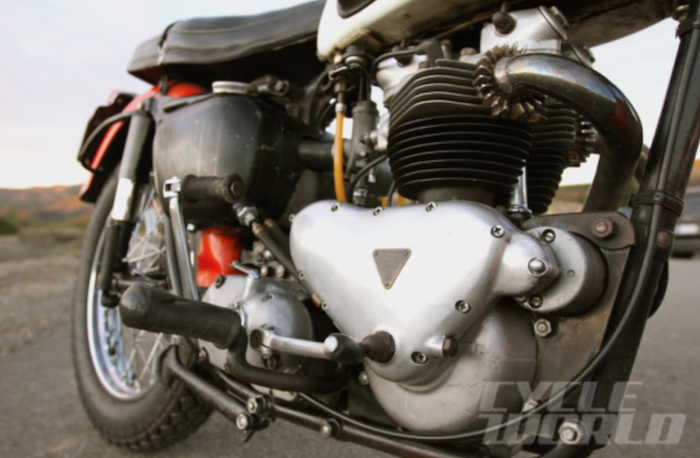FIVE WORTHLESS TRICKS FOR RACERS

A panacea is a remedy for all ills, and motorcycling is vulnerable to such things. So many people want to “do something” for their bike—increase its performance, make it last longer, or make it stand out. All this is understandable, but many trends are driven, not by factual advantage, but by what my buddy, the summer set-up guy at the cycle shop, said was hot.
Long ago, there was a mad trend for 1) bigger header pipes on Triumph twins. Bigger and bigger they swelled, until the bubble was burst by a dyno-tuned 500 Triumph winning the Daytona 200 with little dinky header pipes. Oops.
Before that, there was a madness among amateur riders in the Isle of Man TT races for 2) having their combustion chambers “coppered.” Just pull your head, take it to the platers, pay a few bob, and get it back looking like a new penny. Copper is a much better conductor of heat than the iron of that era, but copper plate, being only a thou or two thick, had zero effect on cooling. How did this one get started? Maybe it was Granville Bradshaw, an engineer of the early 20th century, who imagined that copper plating the cylinders of his nearly finless engine designs would magically fix their cooling problems.
Beginning in the 1970s and continuing most of the way through the 1980s, sports-minded buyers of Japanese bikes 3) ripped off their intake airboxes and filters, substituting pastel-hued sock filters in certainty of unlocking huddled masses of horsepower, yearning to breathe free. But when they did this with the sportbikes of the late 1980s, the result was power loss you could feel.
Why didn’t it work as the set-up guy said it would? Because the new bikes were coming with airboxes that acted as intake resonators, boosting torque by as much as 10 percent, as each engine intake pipe took in air when box pressure was peaking in its rapid pressure cycle. Such resonant airboxes often also had forward-facing ram air pipes, capable of boosting torque by another couple of percent at high speed (as in 160 mph).
Then it was 4) “liquid horsepower,” as some riders misread articles about the new low-viscosity oils being adopted in some new bikes. The oil specified for a given machine must under all circumstances form a film in crankshaft bearings that is thicker than the height of irregularities on the crank journals. Just pouring in a lower viscosity oil caused that minimum oil film thickness to decrease, but did nothing to reduce bearing journal asperity height. The predictable result was bearing damage.
The new bikes using low viscosity oils have crank journals with much lower asperity heights thanks to a special lapping process. Low viscosity oils are just fine in those new bikes, but not in older models whose crank journal surfaces are less smooth. But many were unable to resist the unctuous charm of the phrase “liquid horsepower.”
Right now, reports are rolling in describing big increases in top speed attributed to 5) replacing 52100 steel wheel ball bearings with miraculous new ceramic bearings (photo above). Hmm, we know that the horsepower required to drive a vehicle through the air at speed increases as the cube of the speed (speed x speed x speed). If we make a change and see top speed rise from 178 mph to 181, we can get a good idea of the extra power required by the ratio of cubes of those numbers. It comes out to 1.0514 in this case, so we can figure it took roughly five percnet more horsepower to boost top speed from 178 to 181 mph. If we’re talking about a sportbike, engine power is probably in the range of 175, and five percent of that is nearly nine horsepower.
Each horsepower is 746 watts, which is the usual output of a red-hot kitchen toaster. Nine times 746 is roughly 6,700 watts of heating power. If our five nasty old-tech steel wheel bearings (two in the front wheel and three in the rear) were eating up 6,700 watts of power, or two toasters’ worth each, we should be able to see them nearly glowing after a speed run. Do they glow? For just $27 we can own an MS6530H Commercial Electric infrared remote thermometer, with which to make our own survey.
But wait. I’m all for personal freedom and self-expression. If you feel you must install ceramic bearings, get to it!
Read more: http://www.cycleworld.com/2015/08/20/five-worthless-tricks-for-racers-that-dont-make-your-motorcycle-faster/
